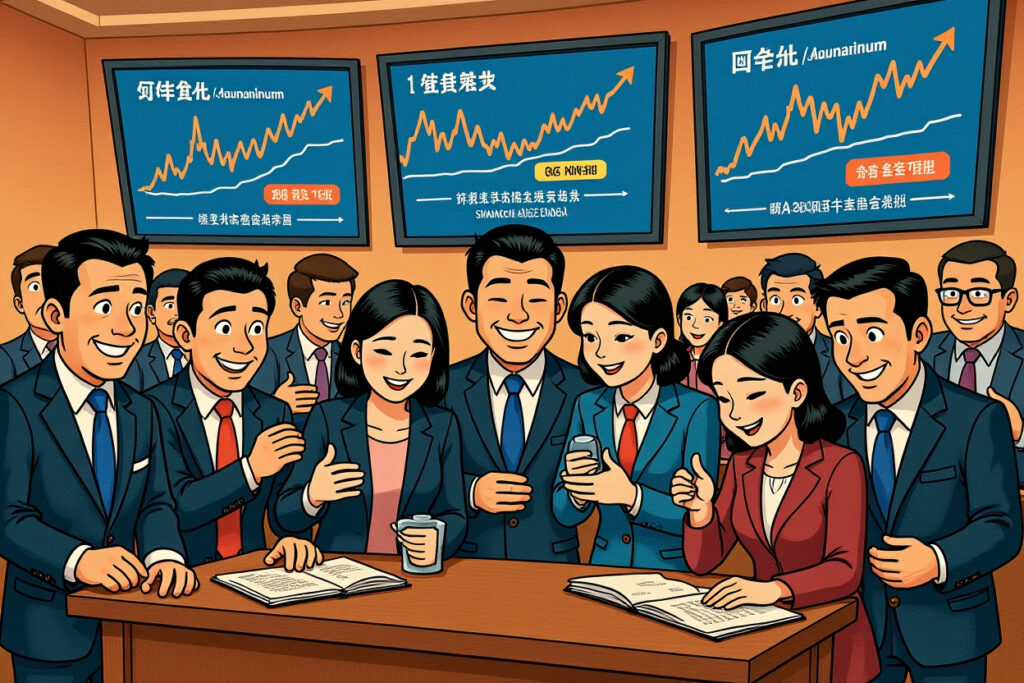Executive Summary
Key developments and implications for Shenlan Auto (深蓝汽车) and the broader Chinese EV market:
– Shenlan reduces 2025 delivery target from 500,000 to 360,000 units (-28%), reflecting slowed growth amid intense competition.
– New CEO Jiang Hairong (姜海荣), former Honor CMO, appointed to strengthen branding, replacing Deng Chenghao (邓承浩) who becomes Chairman.
– Brand faces dual challenges: lack of hero products and weak user trust due to recent controversies.
– Strategic pivot towards Huawei’s intelligent solutions and super range-extender technology highlights effort to differentiate.
– Success hinges on balancing marketing innovation with product reliability and global expansion strategies.
Shenlan Auto Navigates Turbulent Waters as It Adjusts Strategy and Leadership
Shenlan Auto (深蓝汽车), the electric vehicle subsidiary of state-owned automaker Changan Automobile (长安汽车), finds itself at a critical juncture. The company recently announced a significant reduction in its 2025 delivery target and unveiled a new CEO with a consumer electronics background. These moves signal deeper challenges facing one of China’s promising EV brands as competition intensifies and growth slows.
The appointment of Jiang Hairong (姜海荣), former Chief Marketing Officer at Honor (荣耀), and the downward revision of sales targets underscore the pressures on Shenlan to refine its strategy, strengthen brand identity, and accelerate its market position. This analysis examines the underlying issues, market context, and strategic outlook for Shenlan Auto.
Revised Targets Reflect Market Realities
Shenlan Auto’s decision to lower its 2025 delivery target from 500,000 to 360,000 units—a 28% cut—comes amid slowing sales growth and fierce competition. With only 198,600 vehicles sold in the first eight months of 2024, the brand achieved less than 40% of its original annual goal, making the revised target a necessary, albeit challenging, adjustment.
Market Position and Competitive Landscape
China’s new energy vehicle (NEV) market continues to grow but is increasingly dominated by top players. Brands like Leapmotor (零跑汽车), AITO (鸿蒙智行), and XPeng (小鹏汽车) have reported robust growth and sales volumes, leaving mid-tier players like Shenlan struggling to keep pace.
Key competitors:
– Leapmotor: 328,900 units (Jan-Aug 2024), +136.4% year-on-year
– AITO (Huawei-backed): 291,400 units
– XPeng: 271,600 units, +251.8% year-on-year
Shenlan sold 28,200 units in August, ranking eighth among NEV startups. While it recorded a 40% year-on-year increase for the month and 64.6% for the Jan-Aug period, its growth lags behind sister brands like Changan Qiyuan (长安启源) and Avatr (阿维塔).
Leadership Shuffle: A New Captain at the Helm
In February 2024, Deng Chenghao (邓承浩) transitioned from CEO to Chairman, and in September, Jiang Hairong (姜海荣) was named the new CEO. Jiang’s background at Honor, where he led marketing campaigns and brand strategies, signals Shenlan’s intent to revitalize its brand presence and storytelling.
Jiang’s Challenge: Beyond Marketing
While Jiang’s expertise in consumer electronics marketing is valuable, Shenlan’s issues run deeper than messaging. The company must address product shortcomings, user experience gaps, and operational execution to translate marketing gains into sustainable sales.
As Deng Chenghao acknowledged, Shenlan suffers from a mismatch between product strength and communication effectiveness. Jiang’s success will depend on bridging this gap while fostering innovation in products and user engagement.
Product Portfolio and Competitive Gaps
Shenlan offers a diverse lineup, including the S09 (family SUV), S07 and S05 (SUVs), L06 and L07 (sedans), and G318 (off-road SUV). However, it lacks a true hero product—a high-demand model that defines the brand and drives volume.
Monthly sales figures (August 2024):
– Shenlan S07: 7,806 units
– Shenlan S05: 6,036 units
By comparison, competitors like BYD (比亚迪) and Geely (吉利) boast blockbuster models with monthly sales in the tens of thousands. Even direct rivals such as Leapmotor C10 and XPeng M03 consistently exceed 10,000 units per month.
The ‘Good Product, Poor Story’ Dilemma
Shenlan’s products are competitively priced and feature-rich, but the brand has struggled to communicate a compelling unique selling proposition (USP). Unlike BYD’s blade battery or Huawei’s intelligent driving solutions, Shenlan has yet to establish a defining technological or brand edge.
User Trust and Brand Perception Challenges
Recent missteps have eroded consumer confidence. In May 2024, Shenlan drew criticism for inserting advertisement pop-ups into the vehicle infotainment system—a move seen as intrusive and potentially unsafe. Chairman Deng Chenghao publicly apologized, but the incident highlighted a broader issue of user experience oversight.
The ‘Backstabbing’ Controversy
In September, Shenlan launched an updated version of the S09 SUV just three months after the initial release. The new model offered significant upgrades—including enhanced screens, seating, and entertainment features—at the same price, angering early adopters who felt devalued.
This practice, common in consumer electronics but rare in automotive, damaged Shenlan’s reputation for customer loyalty and long-term value protection.
Strategic Reorientation: Technology Partnerships and Focus Areas
At its autumn product launch, Shenlan unveiled a new strategy: ‘Left hand Super Range Extension, right hand Huawei Qiankun Intelligent’ (左手深蓝超级增程,右手华为乾崑智能). This dual emphasis on extended-range technology and Huawei’s intelligent solutions aims to differentiate Shenlan in a crowded market.
Huawei Partnership: Opportunities and Limitations
While partnering with Huawei brings advanced technology and brand association, Shenlan is one of many brands leveraging Huawei’s solutions. Others—including AITO, Avatr, and Luxeed—have deeper integrations and higher brand positioning.
Shenlan’s mass-market pricing (CNY 100,000–250,000) also creates a mismatch with Huawei’s premium brand image, potentially limiting the synergy’s effectiveness.
Path Forward: From Product-Centric to User-Centric
Jiang Hairong has outlined three priorities: building a clear brand identity, developing sustainably popular models, and expanding globally using his experience from Honor. This requires a holistic approach beyond marketing—touching product development, user engagement, and operational strategy.
Internally, the division of responsibilities between Jiang and Deng remains fluid. Options include Deng focusing on future products and global strategy while Jiang handles current operations, or Deng leading product/technology with Jiang overseeing marketing. A clear, collaborative structure will be essential for execution.
Shenlan Auto’s Crossroads: Brand Identity and Execution Will Determine Future
Shenlan Auto stands at a pivotal moment. The leadership change and target revision are necessary steps, but success will require resolving fundamental issues: establishing a clear brand identity, improving user trust, and developing hero products.
The company’s association with Changan provides engineering and manufacturing strength, while Jiang’s marketing savvy offers potential for better storytelling. However, in China’s cutthroat EV market, branding and technology alone are insufficient—consistent execution, customer loyalty, and sustainable growth are imperative.
For investors and industry observers, Shenlan’s journey offers critical lessons on the challenges of scaling in the NEV sector, the importance of brand clarity, and the balance between innovation and user satisfaction. Watch for updates on model launches, partnership developments, and quarterly sales as indicators of Shenlan’s progress.




